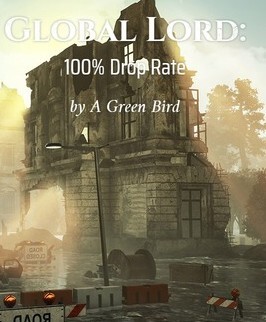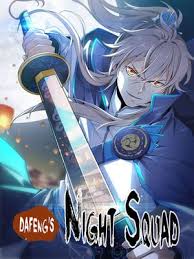Chapter 340 Compilation
However, because of this, the "Valentine" tank was finally converted into a tank with excellent performance by the Soviet army... The Soviet army replaced its tank gun entirely, canceled the smoke launcher, added additional armor to the front, and rebuilt the track Install the skid gear.
As a result, "Valentin" became a heavy tank in the Soviet Union that surpassed KV1 in terms of firepower, protection and maneuverability.
Of course, this is all for later.
At this time, it is obviously too late to carry out such a transformation on the "Valentin", and at this time the Soviet army's own tank guns are not enough, of course, it is impossible to replace the tank guns for the "Valentin".
Therefore, Shulka and Katukov agreed to place the "Valentin" in the third echelon to protect the rear or to deal with enemy infantry.
"Organization!" Katukov put a few tank models on the table as he spoke, and said while arranging: "The enemy tanks enter a distance of 100 meters...they can penetrate our tanks, and 'Matilda' 'Still powerless against the enemy, we're obviously relying on bazookas!"
The problem with the "Matilda" is that it is an infantry tank.
Infantry tanks are simply used as shields for infantry, so armor protection is required to be strong enough, and firepower is second.
Under the guidance of this design idea, the British piled up a large amount of armor. As a result, the internal space was insufficient to equip larger caliber anti-tank guns. "Armor penetration is severely lacking when tanking.
In fact, the more serious thing is not the anti-tank gun, but the shell is too light, which makes it often unable to cause serious damage to the tank components even if it can penetrate the armor of the German tank.
So, the only thing the Soviet army could count on was infantry.
If it was in the past, it would definitely not work. Infantry bombing tanks must rush forward with grenades, Molotov cocktails, and explosives...Although it is only 100 meters away, under the firepower of enemy tanks and infantry, I am afraid that they will never be able to reach it. destination.
But now it's possible, they don't need to rush forward, they just need to set up the bazooka and pull the trigger.
The problem lies in the organization. What kind of firepower should the Soviet army use to suppress the enemy's firepower, and what attack density should the bazooka use?
After thinking about it, Shulka said: "We can try to form an anti-tank squad under the platoon. Each squad has 8 people. Two people will be equipped with four rocket launchers, and a carriage will be equipped to transport ammunition."
The platoon is used as the unit because the Soviet army at this time is that each tank is followed by a platoon, so that each tank has four rocket launchers behind it.
"And put the infantry squad in charge of covering the bazooka shooters?" Katukov asked.
"Yes!" Shulka said: "The first and second squads are responsible for covering the two rocket launchers respectively, and the third squad is used to coordinate tank operations."
Katukov nodded in agreement.
Complicated command is taboo on the battlefield. For example, the Japanese army made such a mistake in the command of the naval battle at this time... The Japanese character is cautious, and they hope to mobilize every ship and everyone to form a perfect team The war machine defeated the enemy, so the command even went down to where each torpedo boat should be, what to do, and what tasks.
There seems to be no problem doing this on the surface, and even the maneuvers can be carried out perfectly as they imagined.
The problem is that the battlefield is changing rapidly and there will always be emergencies of one kind or another. Once there is a problem with any part of such a complex and interlocking command, the result will be total chaos.
So the battlefield often needs to give frontline officers and soldiers some autonomy to let them play freely according to changes in the battle situation. This is what the German army did.
At this time, the plan proposed by Shulka is very simple, and the division of labor is very clear, especially the establishment of another anti-tank squad will not disrupt the original formation of the troops.
"Also!" said Shulka, "I think we should cancel the anti-tank rifle!"
"Cancellation of anti-tank rifles?"
"Yes!" Shulka said: "Although anti-tank rifles are still effective against armored vehicles and light tanks, to some extent, anti-tank rifles will seriously affect the firepower of infantry squads and make them unable to provide enough reinforcement firepower!"
At this time, the 1st Guards Tank Brigade is equipped with an anti-tank rifle in each squad, and the anti-tank rifle requires two people to coordinate operation, which means that two infantrymen in each squad are regarded as anti-tank personnel instead of infantry.
"More importantly!" Shulka continued: "I think the bazooka can fill the gap of the anti-tank rifle... At a long distance, our tanks can deal with those light tanks and armored vehicles. Tank rifles are more applicable!"
Katuf nodded: "So, what equipment do you think the extra two should use?"
"PPSh-41 submachine gun!" Shulka replied without thinking.
PPSh-41 is the Burbosha submachine gun, which Spakin showed Shulka in the laboratory last time.
Although the Poposa at this time has been equipped with the Soviet army, this equipment is only equipped with commandos and motorized reconnaissance units in small batches. It is more hoped that its potential defects will be found in actual combat, and then enter the mass production process after correction. (Note: Bobosa did not enter mass production until mid-1942)
"PPSh? Two more PPSh per class?"
"Yes, Comrade Colonel!" Shulka said: "You must know that we will fight the enemy at a distance of about 100 meters, and the range of the PPSh is about 300 meters... Its firepower and persistence are no better than machine guns. Bad, this is equivalent to two more machine guns per shift!"
"It makes sense!" Katukov agreed: "In this way, we can fully suppress the enemy's infantry firepower, and then the bazooka can deal with enemy tanks!"
"Yes!"
"I'll contact you immediately to increase the PPSh submachine gun. This is not a small amount!" Katukov said: "But I believe it can be done. As for you... Comrade Shulka, I think you need to assist Gavrilov Comrade is responsible for the training of the infantry regiment, is there a problem?"
"No problem, Colonel!" Shulka replied confidently.
Shuerka originally thought that such training would not be too difficult, because there were not many changes in the troops.
But just after contacting Lieutenant Colonel Gavlov, he was stumped.
"Bazooka? What kind of bazooka?" Major Gavrilov said, "Shulka, you said you want to train, but we haven't even seen a bazooka. What kind of training do you use?"
"They are hurrying to produce!" Shulka said: "It may be too late to train after it is produced!"
Gavrilov spread out his hands: "But we can't make actions against the air, it won't have any effect!"
(end of this chapter)







